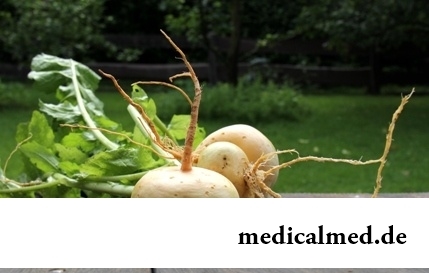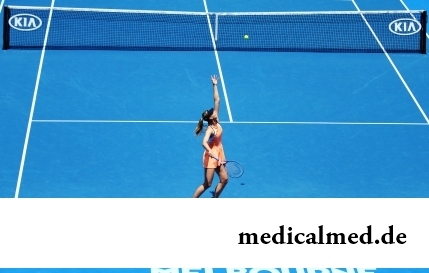





Hematologist
The hematologist – the doctor advising concerning diseases of the hemopoietic bodies and blood, who is engaged in research or treatment-and-prophylactic activity.

Questions according to sections of medicine concerning functions and a structure of systems of blood (directly blood, bodies of a hemopoiesis and kroverazrusheniye), the reasons of development of diseases of circulatory system enter competence of the hematologist. Also the hematologist is engaged in development of methods of recognition of these diseases, finds ways of their treatment and prevention.
Concerning what diseases it is necessary to address for consultation the hematologist?
1. Iron deficiency anemias
Anemias are the most widespread diseases of system of a hemopoiesis. If in indicators of blood the quantity of erythrocytes and hemoglobin is reduced, it is worth speaking about anemia. The diseases having various etiology, but preferential enter a concept of anemia all of them are connected with shortage of iron.
On reception the hematologist will tell that at creation of hemoglobin in the ripening marrow erythrocytes exchange of iron has crucial importance. Iron is in muscles, and also is a part of respiratory cellular enzymes. In case of shortage of iron many exchange processes in an organism begin to work with disturbances. In particular the hematologist children's as this disease preferential occurs at children under two years is engaged in an iron deficiency anemia more often.
2. Hemolitic anemias
Hemolitic anemias are diseases, the second for frequency, in which, according to reviews, the hematologist is engaged.
At hemolitic anemias marrow develops enough erythrocytes, but owing to various circumstances they have short life expectancy and are subject to bystry destruction.
On consultation the hematologist will tell that, most often, the inborn or hereditary factor, about its types, in particular about recessive anemia or dominant is the reasons of hemolitic anemia, that recessive anemia usually has much heavier current and serious effects. According to responses of hematologists, the most widespread type of hereditary hemolitic anemia is Minkowski-Shoffara's disease inherited on dominant type.
3. Hypoplastic anemias
Hypoplastic anemias are directly connected with the beginning of process of destruction of marrow and disturbance of process of a hemopoiesis. In general, the name of a disease not fully opens its essence as in this case it is not only about anemia, but also about defeat of all bodies of a hemopoiesis including those which develop thrombocytes and leukocytes.
According to hematologists, hypoplastic anemias happen acquired or inborn. The most common inborn form of a disease is Fankoni's anemia. Its feature is that hematologic disturbances happen in combination with other inborn malformations, is preferential from bone system.
4. Aplastic anemias
Aplastic anemias represent special group of diseases which reason to establish happens very difficult. The disease is connected with damage of a parent stem cell of marrow from which, actually, and there is a hemopoiesis in various directions. The disease begins sharply, the condition of the patient sharply worsens, appears strong pallor, bruises and bleedings. At this disease urgent consultation of the hematologist and performing immediate treatment is necessary, otherwise the disease has the adverse forecast.
When it is necessary to get on reception to the hematologist?
At blood diseases patients often feel a febricula, deterioration in appetite, weakness, bystry fatigue. Often similar complaints are symptoms of the serious illness connected with disturbance of work of marrow and system of a hemopoiesis. Therefore in the presence of similar complaints at children parents have to address the children's hematologist urgently. Especially parents should prick up the ears with pallor of skin at the child, sometimes with an icteric shade, at emergence of nasal or other bleedings, shadows under the eyes.
On reception to the hematologist it is necessary to get if the child complains of ostealgias, a backbone and joints, and also of abdominal pains and headaches.
If the child often has blood a nose, the increased drowsiness and weakness, a carelessness, irritability, a hyporexia, then it is necessary to address the local pediatrician who will direct the patient to the general blood test and by results of the analysis consultation of the hematologist can be necessary.
If at the child lymph nodes are increased, then it is necessary to address the local pediatrician, and also to undergo consultations of the surgeon, the phthisiatrician, to make the general blood test, to make ultrasonography of abdominal organs and X-ray of bodies of a thorax. By results of a research the pediatrician can direct the patient to the children's hematologist.
It is important to know that you should not begin to accept independently iron preparations at all, and compensation of iron by means of foodstuff is impossible.
According to reviews most often address hematologists concerning the increased lymph nodes. Lymph nodes in an organism perform protective functions and interfere with spread of diseases on an organism that is often shown in their increase and the increased morbidity. Especially it is noticeable at children of preschool age. At children of advanced age and adults suppression of a disease takes place in lymph nodes in general asymptomatically more often.
Diagnosis of anemia
To diagnose anemia, the hematologist will direct the patient to delivery of the following analyses:
- The general blood test with reticulocytes;
- Ferritin;
- Transferrin saturation percent;
- Iron-binding ability.
Today the hematologist also successfully uses the following diagnostic methods of anemia:
- Computer tomography;
- Ultrasonic diagnosis;
- Nuclear magnetic resonance.
All these modern methods of a research allow the hematologist to reveal structure and the sizes of bodies, tumoral formations, various disturbances of bone system.
When lovers kiss, each of them loses 6,4 calories a minute, but at the same time they exchange nearly 300 species of various bacteria.

Some people consider what for medicine of the 21st century of secrets in the field of health of the person almost does not exist. It absolutely not so. Than Bol...
Section: Articles about health
Statistically cystitis 25-30% of women up to 40 years have. With age this indicator raises, besides many do not get to statistics because do not see a doctor. The most sad that after the regular visits to doctors, long reception of antibiotics...
Section: Articles about health
About 20% of the population of our planet have a hypertension (permanent increase in arterial pressure). This disease has an adverse effect on the standard of living, reduces working capacity, and in the absence of systematic treatment threatens with such complications as a myocardial infarction, a stroke and other heavy illnesses which can result in disability or sudden death. Most of patients for maintenance of pressure at more or less acceptable level accept appointed doctors лекарст...
Section: Articles about health
Dietary supplements (dietary supplements) for the last decades were so thoroughly included into our life that, apparently, it is already impossible on...
Section: Articles about health
Season of activity of viral infections in the heat. Everyone can get sick, but probability of this unpleasant event it is possible and it is necessary to minimize. There is a number of rules, following to which will help or to avoid absolutely infection with flu or a SARS, or to have an illness...
Section: Articles about health
Turnip, radish, horse-radish – once these and other products enjoyed wide popularity at our ancestors, being not only the food sating an organism but also the medicines curing of many diseases. Unfortunately, the use of some of them got out of fashion long ago, and once favourite plants and vegetables almost ceased to make a contribution to human health. Inclusion of such products in a modern diet − an effective measure of prevention and treatment of diseases which seldom suffered...
Section: Articles about health
There comes the season of issues. Many Russians already dream of outdoor recreation, trips, beautiful seaside beaches....
Section: Articles about health
Each woman has preferences in the field of use of those goods which help us to look good, feel young and effective. Besides: selection process of favourite perfume, shampoo or decorative cosmetics already lifts a spirit...
Section: Articles about health
Helminthosis is one of the most widespread diseases. Statistically, any species of helminths infected every third inhabitant of the planet. Most of specialists even consider these data strongly underestimated: some uninvited "cohabitants" do not cause the carriers serious troubles, and patients just do not see doctors. The situation is aggravated also with the fact that people know about specifics of similar illnesses very little. At many presence of worms is strong ассоциир...
Section: Articles about health
Traveling all over the world, many try to try the most exotic dishes of national cuisines. Exists even so-called died away...
Section: Articles about health
The immunity role in growth of the child is invaluable. The proteins-immunoglobulins produced by immune system preserve the child against the diseases capable − owing to an organism weak still − to serve as a stressful factor, to become the reason of many complications and delays in unless...
Section: Articles about health
All diseases from nerves – in this joke a big element of truth, are said by doctors. Constant stresses lead to decrease in protective forces of an organism, and it becomes vulnerable for a set of diseases. It is wrong to think that the stress is a problem of the present. Life of people and hundred, and one thousand years ago also abounded with problems therefore need of a relaxation understood in ancient times – to some techniques more than one thousand years. The person needs knowledge of how it is possible to relax, this knowledge пригод...
Section: Articles about health
Cold, puffiness of a nose, itch, the watering eyes - characteristic symptoms of the allergic rhinitis resulting from hit and...
Section: Articles about health
Among a set of the perfumery and cosmetic goods which are released today the special group is made by the means containing antibacterial components. Such types of gels, shampoos, soaps, creams, lotions and other products are positioned by manufacturers as a panacea...
Section: Articles about health
Childbirth is the most important event in life of each woman. We are women we give birth to the new little man on this light. Now the tendency to that was outlined, as men want to participate in labor too. But there is a question and whether it is worth allowing the husbands on childbirth?...
Section: Articles about health
The technique of acupuncture (acupuncture) is used in the medical purposes more than three and a half millennia. It widely races...
Section: Articles about health
Smoking not only exerts a negative impact on the state of health of the consumer of tobacco products, but is an air polluter the substances potentially dangerous to people around. In recent years significantly the number of people, стремящ increased...
Section: Articles about health
A little more than a century ago goat milk was a traditional food stuff of most of Russians. Unfortunately, today on tables of our compatriots it appears extremely seldom. The reason that the use of so useful product practically came to naught, not only in very modest volumes of its production and, respectively, rather high cost. Potential consumers are just insufficiently informed on unique properties of goat milk and that advantage which...
Section: Articles about health
The drugs stopping or oppressing life activity of pathogenic microorganisms are widely applied in clinical practice with 4...
Section: Articles about health
Proofs of efficiency of Mildronate at treatment of coronary heart disease with stenocardia can be found in many publications of the end of the twentieth century. Researches were conducted since 1984, including placebo - controlled effects. In total клиничес...
Section: Articles about health
Bulimia and anorexia, are heavy deviations of a feeding behavior, become a cause of death of patients much more often than all other nervous breakdowns combined. In 60% of cases two illnesses accompany each other: patients feel horror before danger of set of excess weight and try to refuse as often as possible food, but periodically suffer from attacks of sudden hunger and an uncontrollable overeating. Each patient with anorexia and bulimia needs the help qualified пс...
Section: Articles about health
The main role in development of a peptic ulcer of a stomach and duodenum the bacterium Helikobakter plays pilor. Activity and Wuxi...
Section: Articles about health
Obesity is called a disease of 21 centuries, for the last 100 years the number of the people suffering from excess body weight considerably increased. Statistically, on Earth already about 1,5 billion corpulent people, and 500 million from them have extreme degree of completeness, are negative...
Section: Articles about health
The state of health of the person depends on many factors. One of the most important is the constant, but not exhausting a physical activity. In the presence of various illnesses specialists often advise patients to do swimming which by right takes the leading place by efficiency of improvement, having at the same time a few contraindications. Today we will talk about the main directions of therapeutic impact of swimming on a human body....
Section: Articles about health
Aspirin (acetylsalicylic acid) – one of those drugs which are known literally to all. It is available in each home first-aid kit...
Section: Articles about health
Many parents of children at the age of 2-4 years face excessively whimsical behavior of the child. The kid exhausts constant crying and whims not only the parents, but also himself. In what the reasons of children's whims. And how to fight with them?...
Section: Slideshow
Statistically, in Russia about 34% of citizens smoke. Most of consumers of tobacco has problems with health sooner or later. Not only smokers, but also their relatives suffer. Besides, cigarettes are expensive, and need of their acquisition goes a heavy burden on the budget of thousands of Russian families. Many people dream to refuse harmful tendency, but everyone manages to make it not: nicotine addiction is affectionate and to get rid of it not easy....
Section: Articles about health
